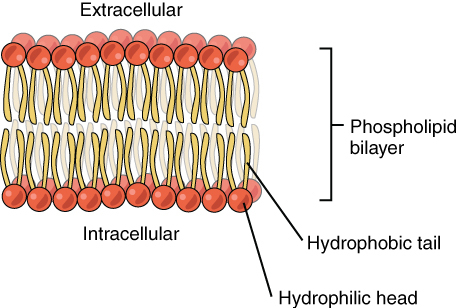8th Grade > Biology
CELL - STRUCTURE AND FUNCTION MCQs
:
D
The jelly-like fluid present between the cell membrane and the nuclear membrane is called the cytoplasm. It houses all the cellular organelles and is the site for most of the metabolic activities taking place in the cell.
:
A and B
All living cells can be divided into two groups - prokaryotes and eukaryotes. Prokaryotes do not have a well-defined nucleus and membrane-bound organelles. All bacteria like E. coli, Salmonella typhi and blue-green algae are prokaryotes. Amoeba has a well-defined nucleus. Therefore, it is a unicellular, eukaryotic organism. Viruses are obligate parasites that lack cellular machinery. Hence, Human Immunodeficiency Virus (HIV) does not belong to any of these groups.
:
B
Vacuoles are membrane-bound organelles present in both plant and animal cells. In plants, usually a single, large and permanent vacuole is present. It typically occupies 30% to 80% of plant cell volume. It is surrounded by a membrane called tonoplast and is filled with cell sap. Vacuoles may or may not be present in animal cells. If present, they are small and numerous.
:
A and C
Nucleus is a cell organelle present only in eukaryotic cells. It is a double membrane bound organelle which contains the heredity material - DNA. DNA is super coiled inside the nucleus and forms structures called chromosomes.
:
Photosynthesis is a process by which green plants convert light energy into chemical energy. Simple raw materials such as water and carbon dioxide are converted to glucose in the presence of light. Life supportive oxygen is given out as a byproduct in this process.
:
C
Most of the cells are microscopic in size and are not visible to the unaided eye. They need to be enlarged or magnified by a microscope. Some cells are big enough to be seen with the unaided eye. Example of that is a hen’s egg which is considered as a single cell. It can be seen by the naked eye.
:
A
There are various theories explaining the origin of life on Earth. However, most of the theories agree with the fact that life on Earth started from a single cell.
:
D
The main postulates of cell theory are:
• All living organisms are composed of one or more cells.
• Cell is the basic unit of structure, function, and organisation in all organisms.
• All cells come from pre-existing, living cells.
All living cells do not have cell walls. It is present only in plants, fungi and bacteria.
:
A
Guard cells are cells surrounding each stoma. They help regulate the opening and closing of the stoma. When the guard cells are turgid or swollen, the stomatal opening is large and when the guard cells have lost water or flaccid, the stomatal opening closes.
:
D
∙ The plasma membrane is composed mainly of phospholipids. They are arranged in two layers, called a phospholipid bilayer. Each phospholipid molecule has a head and two tails. The head “loves” water (hydrophilic) and the tails “hate” water (hydrophobic).
∙ The water-hating tails are on the interior of the membrane, whereas the water-loving heads point outwards, toward either the cytoplasm or the fluid that surrounds the cell.

















